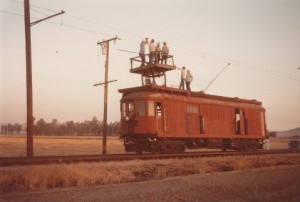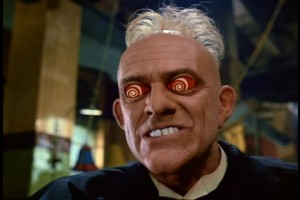You can’t go too far in L.A. transit circles without hearing about the Great Streetcar Conspiracy Theory. The gist is this: L.A. had an awesome rail system a century ago (the Yellow and Red Cars), but auto interests bought it up and dismantled it.
So the terrible traffic and car-dependency in L.A. is solely the result of nefarious corporate action.
It’s a convenient but ultimately untrue tale, as I covered in my book Railtown and on this blog.
Colin Marshall over at The Guardian discusses this myth, lending some credence to it by citing a problematic grand jury proceeding that supported the conspiracy. Still, he notes the complex array of factors that led to the dismantling of the streetcars:
This [streetcar] conversion process had begun well before General Motors and the others involved in National City Lines started buying up streetcar systems. By the end of the 1920s, about 20% of the country’s cities used buses only, and even in 1923 the Pacific Electric had put their order in for buses to run instead of trains on some routes. NCL did indeed replace more trains with buses after purchasing the financially troubled Los Angeles Railway in 1945, but that just continued a process that had begun much earlier, and which took place similarly across the country and indeed the world. Streetcars vanished in almost every metropolitan area in the United States, and only in 10% of those cases did NCL have anything to do with it.
He also rightly points out that the public grew disillusioned with the streetcars and refused to bail them out, while the federal government helped subsidize suburban sprawl through infrastructure investment and tax policies.
He spoke to me for the article, concluding with this thought:
So why does the Great American Streetcar Scandal live on in the hearts and minds of Los Angeles? “Angelenos are rightfully frustrated by being forced to buy cars and sit in traffic to get around, and many feel like this situation was foisted on them without the consent of residents,” says Elkind. “It’s easy to blame car companies because they’re the logical economic beneficiary of this car-oriented system. But the reality is more complex, and if there’s any conspiracy here, it’s on the part of local officials who kept approving sprawling subdivisions that have led to the present inefficient land use patterns.”
And that land use “conspiracy” continues to this day, with far-flung subdivisions approved through California that require automobiles for mobility. And it’s metastasizing to the north of L.A. County, with Supervisor Antonovich’s pet project to connect a super-highway across the Mojave Desert.
It would make Judge Doom proud.
Leave a Reply
You must be logged in to post a comment.




